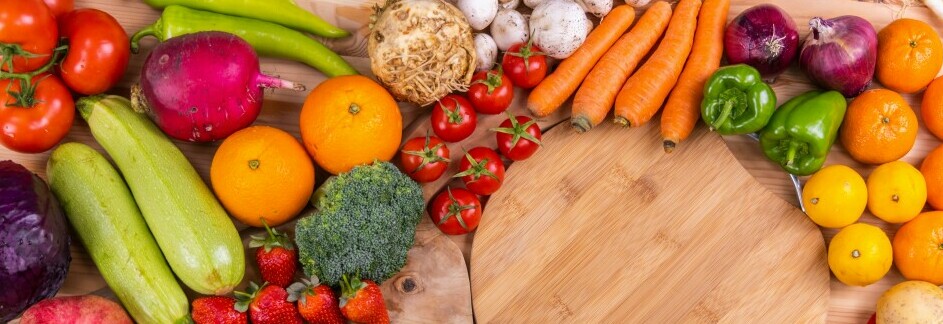
Fresh produce plays a crucial role in our overall health, and understanding its longevity can help us make better dietary choices. Let’s delve into the topic.
Research has consistently emphasized the importance of consuming fruits and vegetables for longevity. Here are some key findings:
- Cardiovascular Health:
-
- A study published in the journal Circulation1 found that people who ate two servings of fruit and three servings of vegetables daily had a 12% lower risk of dying from cardiovascular disease compared to those who consumed just two servings of either fruit or vegetables.
- Leafy greens, carrots, berries, and citrus fruits were identified as healthier choices in this context.
- Overall Mortality:
-
- Another study analyzed data from over 65,000 people and revealed that those who consumed the most fruits and vegetables were 33% less likely to die from any cause compared to those who ate very little of these healthy foods2.
- The risk of cancer death was 25% lower, and cardiovascular disease risk decreased by 31%.
In summary, aiming for a mix of two servings of fruit and three servings of vegetables daily is associated with better longevity. Remember to choose a variety of colorful fruits and vegetables to maximize the health benefits! 🌱🍎🥦3 🌟
How you can include fruits and vegetables into your daily diet.
Incorporating fruits and vegetables into your daily diet is essential for overall health. Here are some practical ways to do so:
- Start Your Day with a Smoothie: Smoothies are a delicious and convenient way to pack in a variety of fruits and vegetables. Blend together plain yogurt, berries (such as strawberries or blueberries), a ripe banana, and pineapple juice. You can even add ground flaxseed for healthy omega-3 fats1.
- Snack on Fresh Produce: Keep fresh fruits like apples, bananas, tangerines, or pears handy for quick snacks between meals. Additionally, snack on raw veggies like celery and carrot sticks with dips such as hummus, ranch, or tzatziki sauce2.
- Add Veggies to Your Main Dishes: Incorporate vegetables into your main meals. For example:
-
- Add finely grated carrots or zucchini to pasta sauce, meatloaf, chili, or stew.
- Experiment with different cooking methods: steam, roast, or sauté veggies to enhance their flavors.
- Make veggies accessible by keeping them washed, chopped, and ready to use.
- Get Creative with Salads: Salads are a fantastic way to include a variety of fruits and vegetables. Mix leafy greens with colorful veggies, fruits, nuts, and seeds. Try different dressings to keep things interesting.
- Sneak Veggies into Your Favorite Dishes: Be sneaky! Slip vegetables into recipes without compromising taste. Cookbooks like “Deceptively Delicious” or “The Sneaky Chef” offer creative ways to incorporate veggies and fruits into various dishes3.
Remember, the more colorful and diverse your plate, the better! Aim for at least 2 cups of fruit and 2.5 cups of vegetables per day, but more is even better for optimal health1. Happy eating! 🌱🍎🥦
How to correctly store fresh fruits and vegetables.
Storing fresh fruits and vegetables properly is essential to maximize their shelf life and maintain their quality. Here are some tips for storing different types of produce:
- Room Temperature Storage:
-
- Keep the following fruits and vegetables at room temperature:
-
- Bananas
- Basil
- Cucumber
- Eggplant
- Garlic
- Grapefruit
- Green beans
- Lemons
- Limes
- Onions
- Oranges
- Potatoes
- Summer squash
- Sweet potatoes
- Watermelon
- Winter squash
- Zucchini
- Counter to Fridge Transition:
-
- Store apricots, avocados, kiwifruit, mangoes, melons, nectarines, papayas, peaches, pears, pineapple, and plums on your counter until they ripen. Once ripe, move them to the refrigerator.
- Refrigerator Storage:
-
- Refrigerate the following fruits and vegetables:
-
- Apples
- Asparagus
- Blueberries
- Broccoli
- Brussels sprouts
- Cabbage
- Carrots
- Cauliflower
- Cherries
- Cilantro
- Corn (whole ears in the husk)
- Dark leafy greens
- Grapes
- Leeks
- Lettuce
- Parsley
- Peas
- Pomegranate
- Raspberries
- Strawberries
- Separate Ethylene Gas Emitters:
-
- Some fruits emit ethylene gas, which can speed up the ripening process of other fruits and vegetables.
- Keep high-ethylene gas-emitting fruits (such as apples, avocados, stone fruits, pears, bananas, and tomatoes) away from other produce.
- Delicate leafy greens are particularly susceptible to ethylene gas.
- Onions should be stored separately to prevent their fragrance from affecting neighboring produce, especially potatoes.
- Handling Cut Fruits and Vegetables:
-
- Sliced fruits and vegetables are convenient for snacking and saving space in the fridge.
- Most fruits last about five days after being sliced (some vegetables a few days longer).
- Store cut produce in an airtight container and always refrigerate it12.
Remember these guidelines to keep your fruits and veggies fresh and flavorful! 🍎🥦🥕
How to freeze fresh fruits and vegetables
Freezing fruits and vegetables is a great way to preserve their freshness and enjoy them long after their peak season. Here are some tips for freezing both fruits and vegetables:
Freezing Fruits:
- Choose Ripe and Unblemished Produce:
-
- Select fruits that are at their peak ripeness and free from any bruises or blemishes.
- Prepare Delicate Berries:
-
- For delicate berries like strawberries or raspberries, arrange them in a single layer on a baking sheet.
- Once frozen, transfer them to a plastic freezer bag or container.
- You can also prepare delicate berries with sugar or sugar syrup if desired.
- Treat Browning Fruits:
-
- For fruits that tend to brown (such as apples, peaches, nectarines, and apricots), treat them with ascorbic acid (Vitamin C).
- Dissolve 1/2 teaspoon of ascorbic acid powder (or finely crushed vitamin C tablets) in 3 tablespoons of water.
- Sprinkle this mixture over the cut fruit to prevent browning.
- Date and Store:
-
- Freeze fruits quickly by spreading them in a single layer on a rimmed sheet pan.
- Once frozen solid, transfer them to air-tight containers or freezer bags.
- Be sure to label the packages with the date.
- Temperature Matters:
Freezing Vegetables:
- Blanch and Shock Vegetables:
-
- Blanching prevents enzymes from damaging color, flavor, and nutrients.
- Briefly blanch vegetables in boiling water, then quickly submerge them in ice water to stop the cooking process.
- Dry thoroughly on paper towel-lined sheet pans.
- Spread in a Single Layer:
-
- Freeze vegetables quickly by spreading them in a single layer on a rimmed sheet pan.
- Once frozen solid, transfer them to air-tight containers or freezer bags.
- Remove as much air as possible from the packaging.
- Use Oldest Frozen Foods First:
-
- Rotate your frozen vegetables to use the oldest ones first.
- Temperature Matters:
Remember to keep moisture inside the package and air outside to maintain the best quality. Happy freezing! 🍓🥦🌽
How long can froze fruits and vegetables be stored?
Frozen fruits and vegetables can last quite a while if stored properly. Let’s break it down:
- Frozen Fruits:
-
- For best quality, use frozen fruits within 8 to 12 months of freezing. After this period, the quality may start to decline, but they will still be safe to eat indefinitely.
- Avocados and bananas can be frozen for 3 months, while citrus fruits can last 4 to 6 months in the freezer.
- Fruit juices remain good for 8 to 12 months when frozen12.
- Frozen Vegetables:
-
- The general rule of thumb is that frozen vegetables will last for 8 to 12 months in the freezer. However, they can still be edible for up to 18 months after preservation.
- Remember that while frozen foods remain safe almost indefinitely, their quality may diminish over time due to factors like freezer burn3.
So, whether you’re enjoying a berry smoothie or a hearty vegetable stew, your frozen produce can be a tasty and convenient addition to your meals! 🍓🥦
If you are looking for storage containers for fruits and vegetables check out this site. here
Kathie